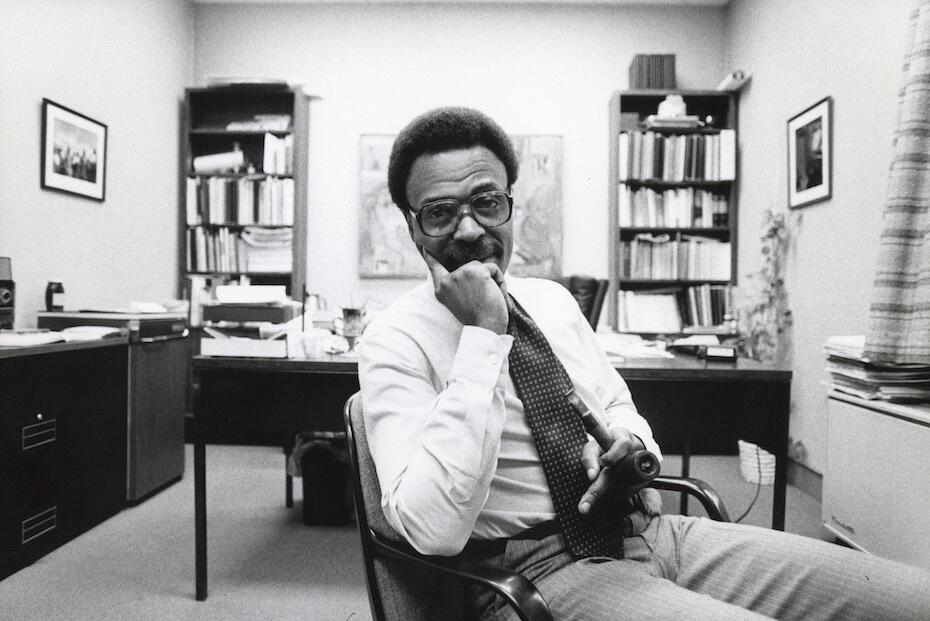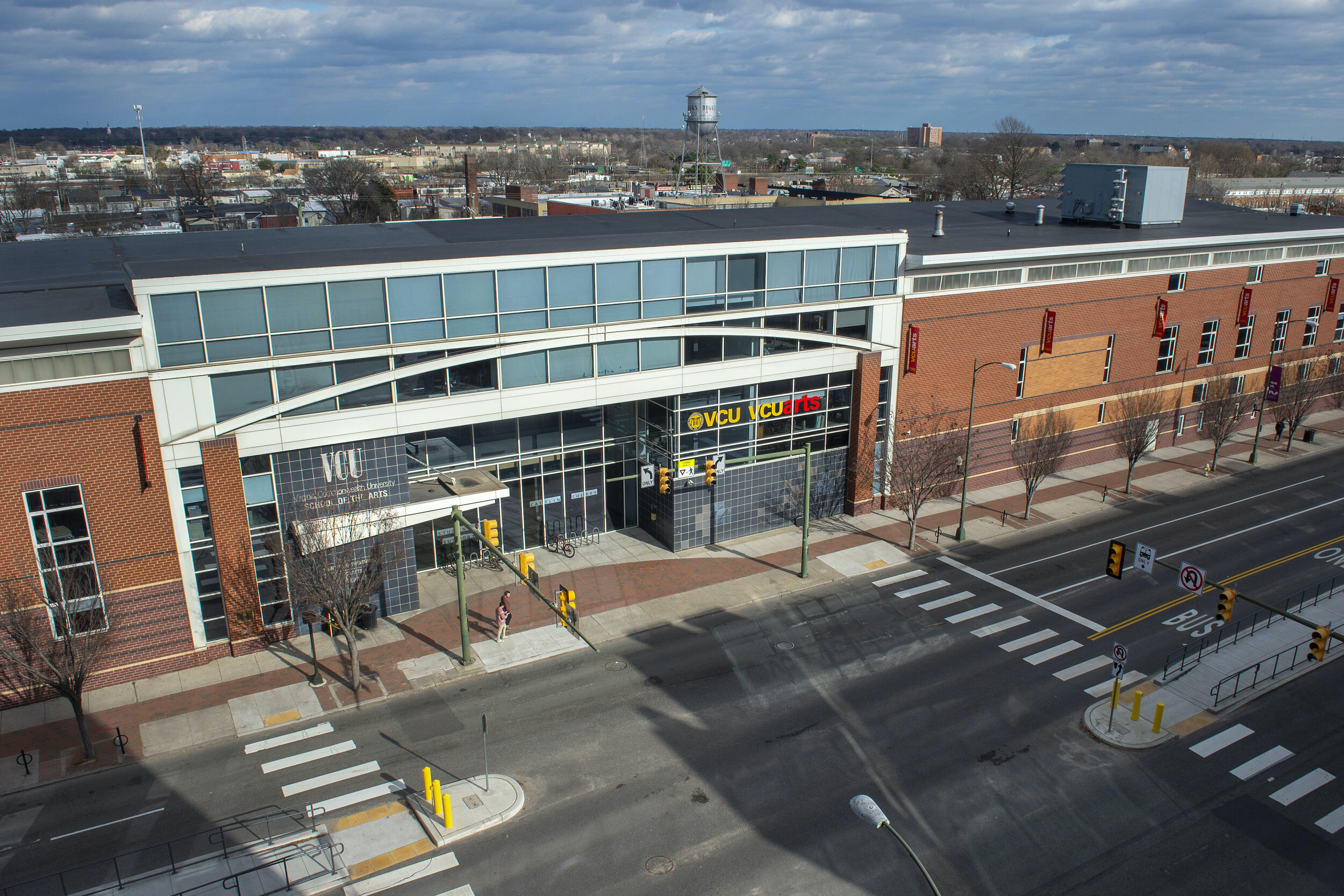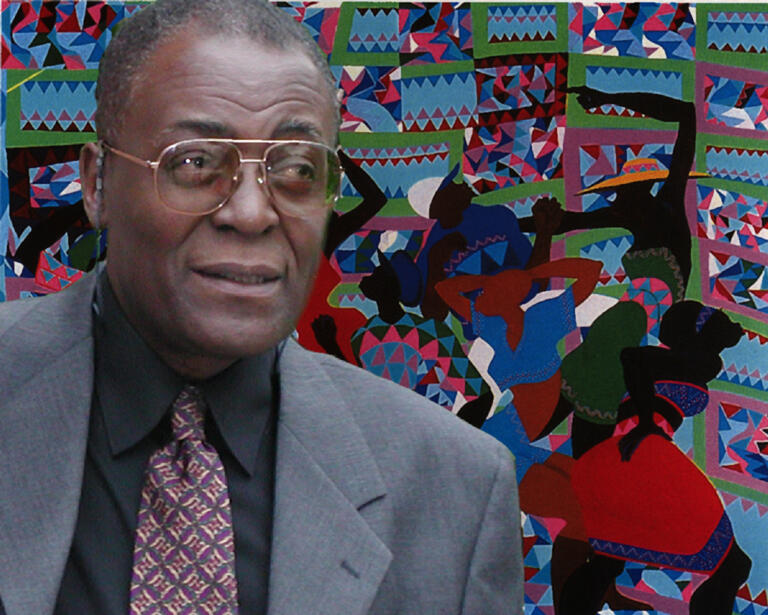
Jan. 6, 2021
VCU names fine arts building after longtime dean Murry N. DePillars
Share this story
Murry N. DePillars, Ph.D., oversaw a period of tremendous growth as dean of the Virginia Commonwealth University School of the Arts from 1976-1995, nearly doubling enrollment and elevating the school’s national reputation. Now, VCU is recognizing the longtime educator, who died in 2008, by naming a School of the Arts building on West Broad Street in his honor.
The dedication, authorized by a Board of Visitors resolution passed in September, renames the Fine Arts Building at 1000 W. Broad St. the Dr. Murry N. DePillars Building. The 114,000-square-foot facility houses the Craft/Material Studies, Painting and Printmaking, Kinetic Imaging and Sculpture departments.
“Dean Murry DePillars' legacy as an artist, an educator and an advocate for our university community — and for Richmond — is profound,” said VCU President Michael Rao, Ph.D. “He brought diverse communities together to learn, to create and to engage in needed conversations. VCUarts grew and achieved well-earned worldwide recognition during his time as a leader. I’m delighted that the Fine Arts Building will bear his name.”
In two decades at the helm of VCUarts, DePillars cultivated a fertile period of development. The school grew to 2,400 students and emerged as one of the largest arts schools in the country under his leadership. DePillars is also credited with increasing funding, including external funding and a sizeable increase in the endowment. But his greatest achievement may be elevating the professionalism of both the faculty and students, which raised the school’s prominence in all fields.

He arrived at VCUarts during a kind of revolution. VCU was only 8 years old when DePillars was named dean — the university was a new entity created from the 1968 merger of Richmond Professional Institute and the Medical College of Virginia. The governance of Richmond was changing too; 1977 marked the election of the first majority Black City Council in almost 30 years, along with the city’s first African American mayor.
The shifting status quo rocked the city. But as dean, DePillars was determined to use the arts to forge a bold, unified spirit in Richmond. Over the next 20 years, VCUarts flourished, growing to become one of the largest arts schools in America with expanded performing arts facilities, campus and city jazz festivals and high-profile fashion shows. These events — many organized largely by DePillars himself — realized his goal of bringing a diverse public together.
“Murry was a bigger-than-life presence,” said Joseph Seipel, who served as dean of VCUarts from 2011-16. “I’ll always remember his graciousness, his sense of humanity and his love of the School of the Arts. The sweet aroma of his pipe tobacco and his hearty laugh always let you know that the impeccably dressed dean was near. Generous with his smiles, he was a friend to so many of us on the faculty as well as our leader.
“Mostly though, nothing was more important to Murry than the students,” Seipel said. “Walking through the halls and studios of the School of the Arts, he always had time to spend talking and engaging with the students. He made sure that the focus of our jobs as faculty and administrators was to give the students the best of ourselves. For that, he will always be remembered.”
DePillars believed so strongly that the arts empowered communities that he was willing to defend the principle before the federal government.
In 1992, the National Endowment for the Arts decided to withhold a $10,000 grant from an Anderson Gallery exhibition featuring photographs of human body parts. In protest, DePillars relinquished his seat on the NEA's Expansion Arts/Arts in Education Initiative panel.
“I did not resign to create a reaction,” DePillars said. “I resigned because of principle.”
That same year, DePillars spoke before the House Appropriations Subcommittee on Interior, Environment, and Related Agencies to argue that the NEA should receive maximum funding, despite years of calls by detractors to abolish it. In his testimony, he spoke to the importance of free speech and public support for the arts.
“The endorsement of free expression is risky,” DePillars said, “yet the benefits for VCU have been returned by distinguished alumni who have been the recipients of Oscars, Emmys, Cotys, ADDYs, Jacob Javits fellowships and, I will add, National Endowment for the Arts grants.”

Like many of VCUarts’ administrative members, DePillars was more than just a dean. He was a professional painter and art historian whose work and research were exhibited and published throughout the country.
A Chicago native, DePillars absorbed every element of the arts scene in the city. He was deeply influenced by the countercultural zeitgeist of the 1960s, becoming a lifelong lover of jazz and a member of the Chicago-based AfriCOBRA — the African Commune of Bad Relevant Artists.
His affinity for the history of Black artistry in the United States and abroad fueled his encyclopedic knowledge of African art history. His paintings incorporated a vast lexicon of cultural iconography, from the gyrations of hip-hop dancers to ancient Saharan petroglyphs. Even in his final years, he worked new materials into his art.
In a 2017 WCVE news story, DePillars’ wife, Mary, recalled him saying, “I have attempted to celebrate, affirm and present the augustness of the Black presence. It is my hope that one day we can acknowledge, appreciate and celebrate the presence of all people.”
Parts of this story originally appeared online in an October 2018 VCU School of the Arts article.
Subscribe to VCU News
Subscribe to VCU News at newsletter.vcu.edu and receive a selection of stories, videos, photos, news clips and event listings in your inbox.





